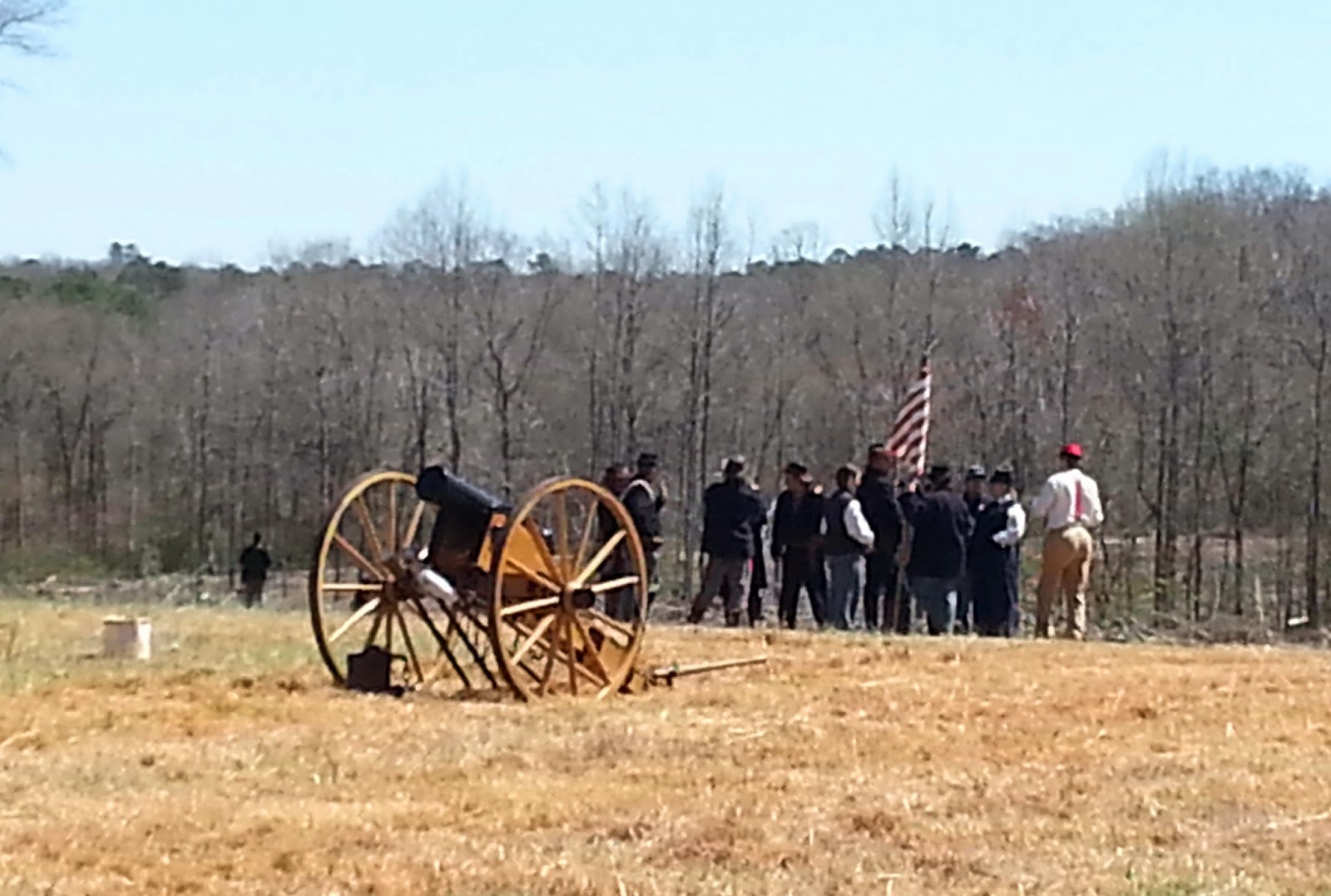I’d never been to a Civil War reenactment before, but I have
been to a number of Renaissance fairs (or more usually, “Faires”), and there’s a
similar feel to a reenactment. In each
case, you park in a grassy field, pay to get in, wander through booths that
sell era-appropriate foods (like giant turkey legs and purple-flavored soda),
try to avoid mussing up anybody’s era-appropriate clothing (like fox tails
clipped to belt loops and pink Confederate army caps), and vie for a spot at
the edge of the playing field where you can see the battle. The only difference is that in one they’re
using lances and in the other they’re using cannons.
The Battle of Anderson, I’m told, was fought somewhere in Anderson County in 1865, weeks after Lee surrendered at Appomattox. I guess news traveled more slowly back then. It was a minor skirmish, but what matters around here is that the Confederate forces won. (I’m getting this from fellow audience members; all I can find online is that the casualty list was larger for the Union troops than it was for the Confederates: 2-0. Maybe, when the war’s already over, he who has the least dead legitimately CAN chalk it up as victory. Even if the other side has more horses.)
But the fact that the Battle of Anderson made hardly a ripple in the history of the war doesn’t mean it’s not quite a sight to see reenacted. I won’t say there weren’t elements of comedy to it; no one “died” until at least 10 minutes into the half-hour battle, despite the fact that they were firing at each other from a few yards apart (and let’s not forget, there were CANNONS!). No one wants to be the first guy to go down when everybody’s having so much fun shooting firecrackers at each other.
But it was exciting too, watching the horses charge back and
forth (they, too, made it through the battle unscathed: no stunt doubles in rural
South Carolina, I guess)…
…and hearing the cannons go off with an explosion you could
feel in your ribcage.
Toward the end of the battle, two young Union soldiers tried
to desert and hide in the woods, and the Union general shot them both in the
back as they ran. Most of the onlookers
probably didn’t even see it happen, but I was struck (not for the first time) by
how coldblooded people can be in the name of honor.
At the end of the battle, the lines were re-formed and the soldiers fired three volleys (the Union general, who doubled as the Master of Ceremonies, explained this to us): first, for those who had ever served in war, second, for those currently serving in the armed forces, and third for P.O.W.s. Those volleys put this little skirmish in a much broader context: single-shot rifles and cannons on wheels have pretty much been replaced by fancier weapons, but when someone’s shooting at you, I don’t imagine it makes much difference what kind of gun it is. It takes courage to stand your ground in the name of something you believe in.
It took courage to be a Confederate soldier, and it took courage to be a Union soldier. Of course, there was no doubt among most of the audience members today as to who was on the “right side” of the Civil War. While we were waiting for the battle to begin, I overheard a young boy point out the Confederate flag over the massing troops. “See over there?” he asked his little brother. “They’re the good guys.”














.JPG)
.JPG)
.JPG)
.jpg)
.jpg)
